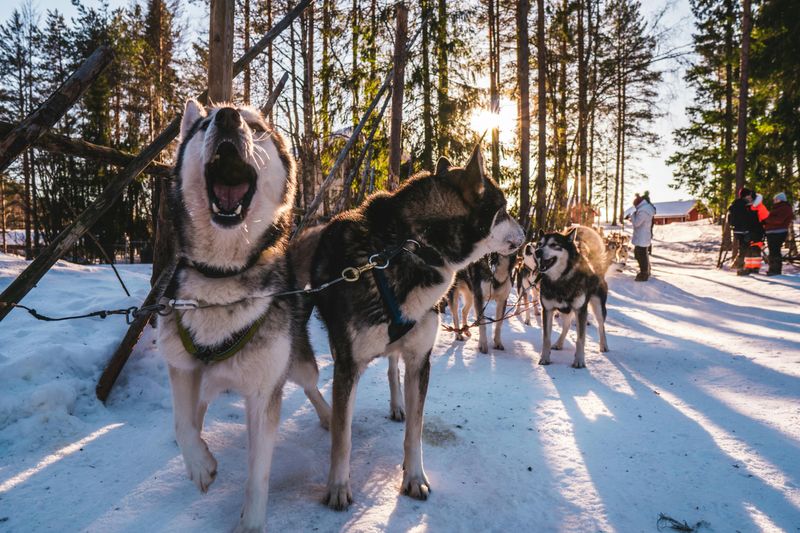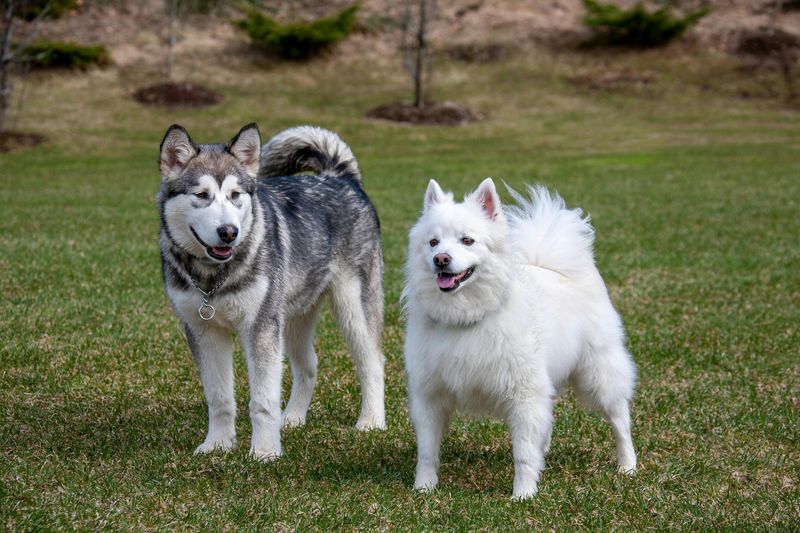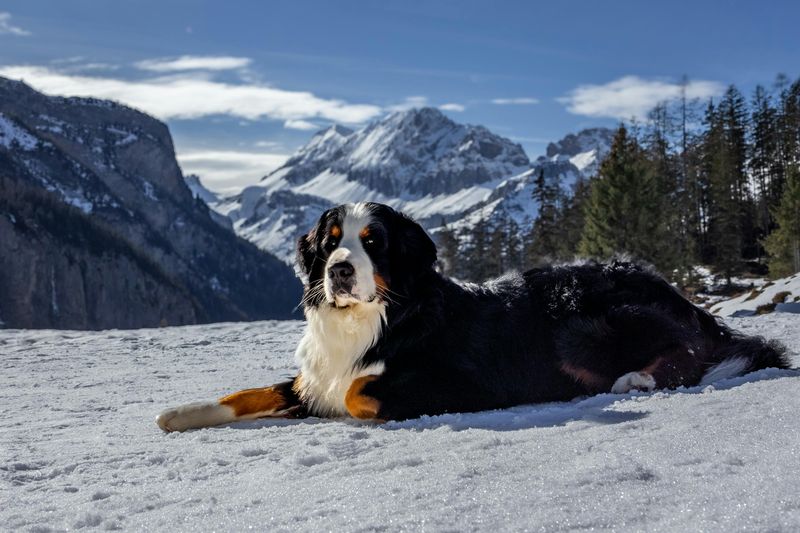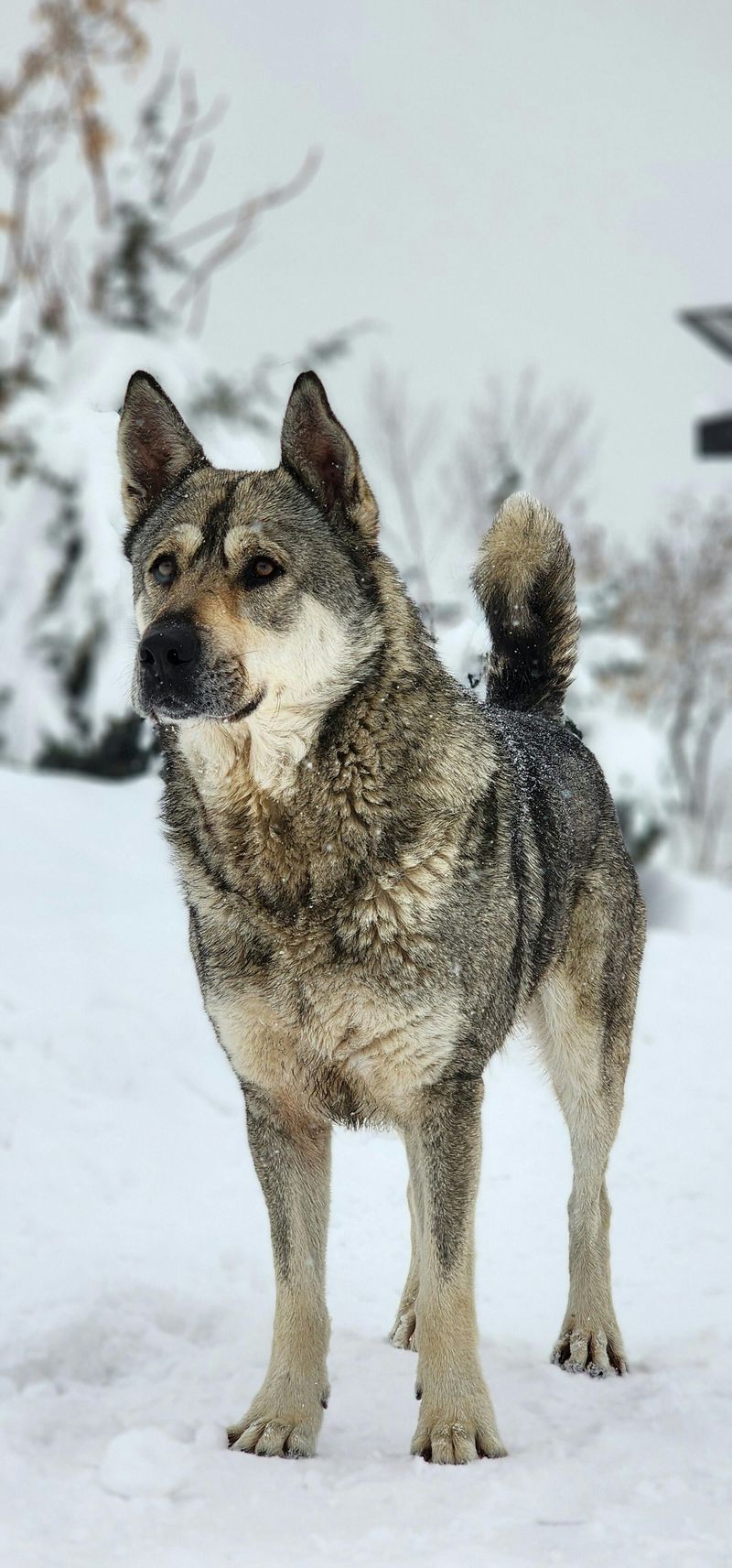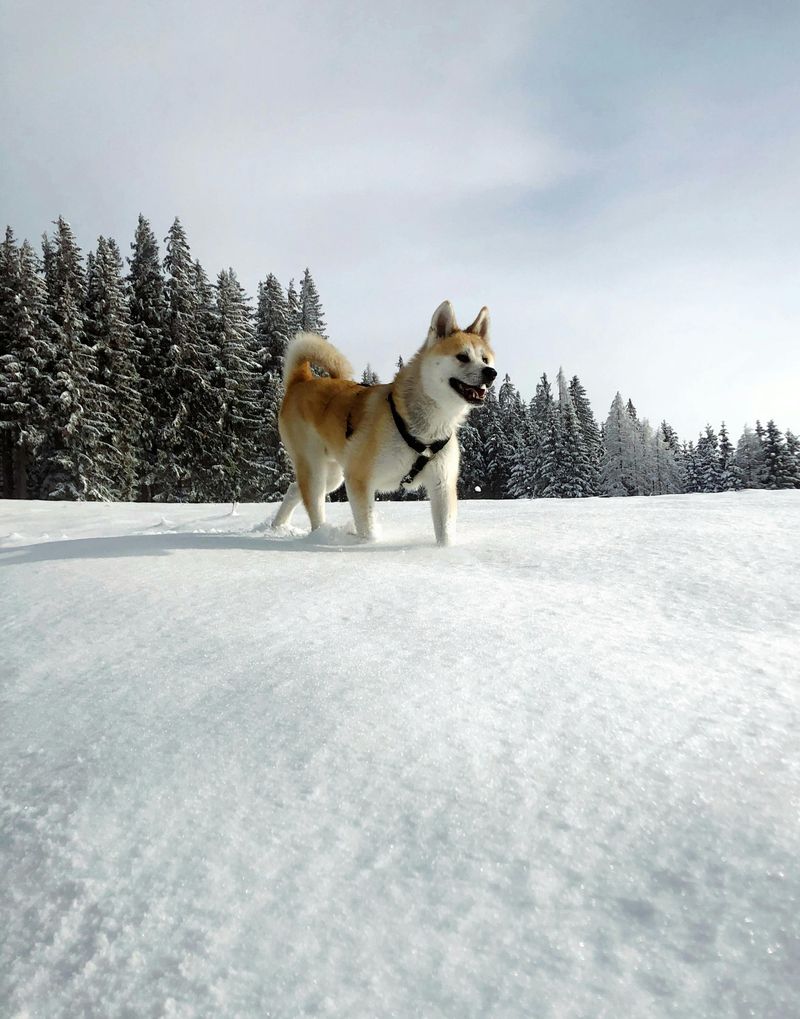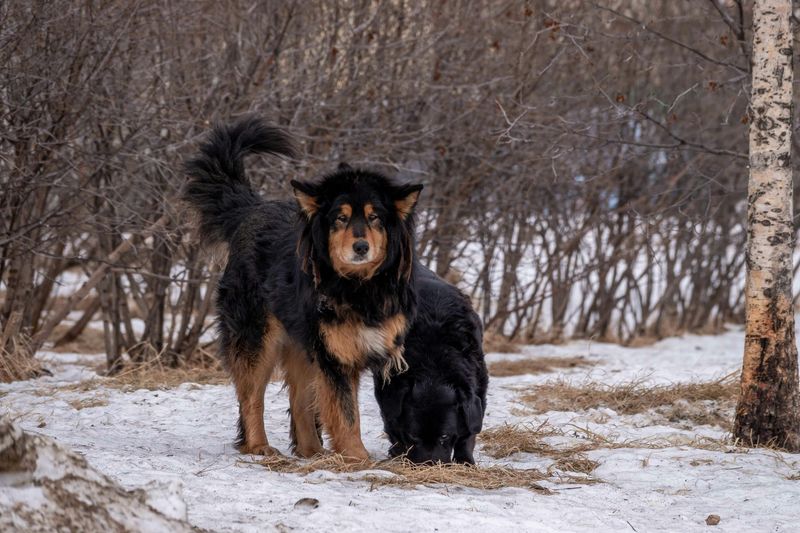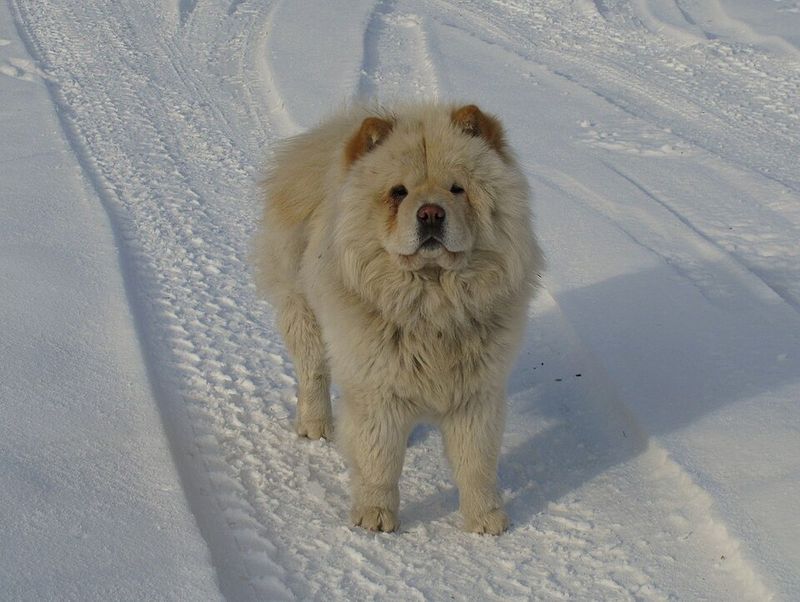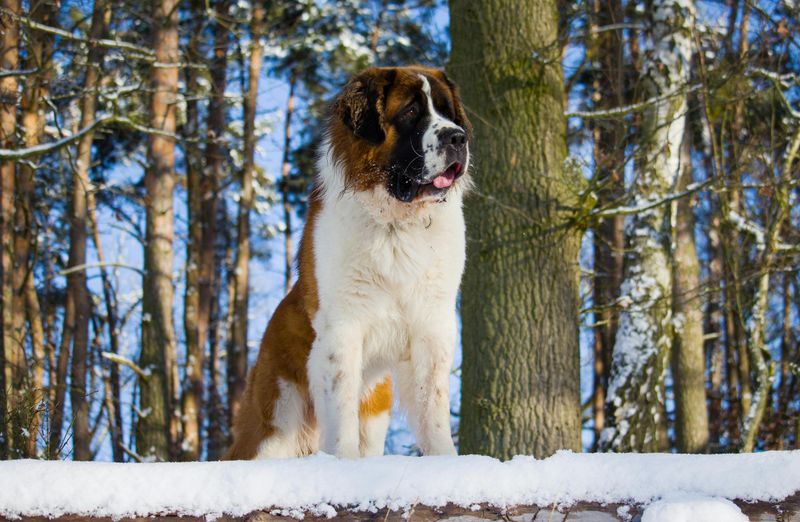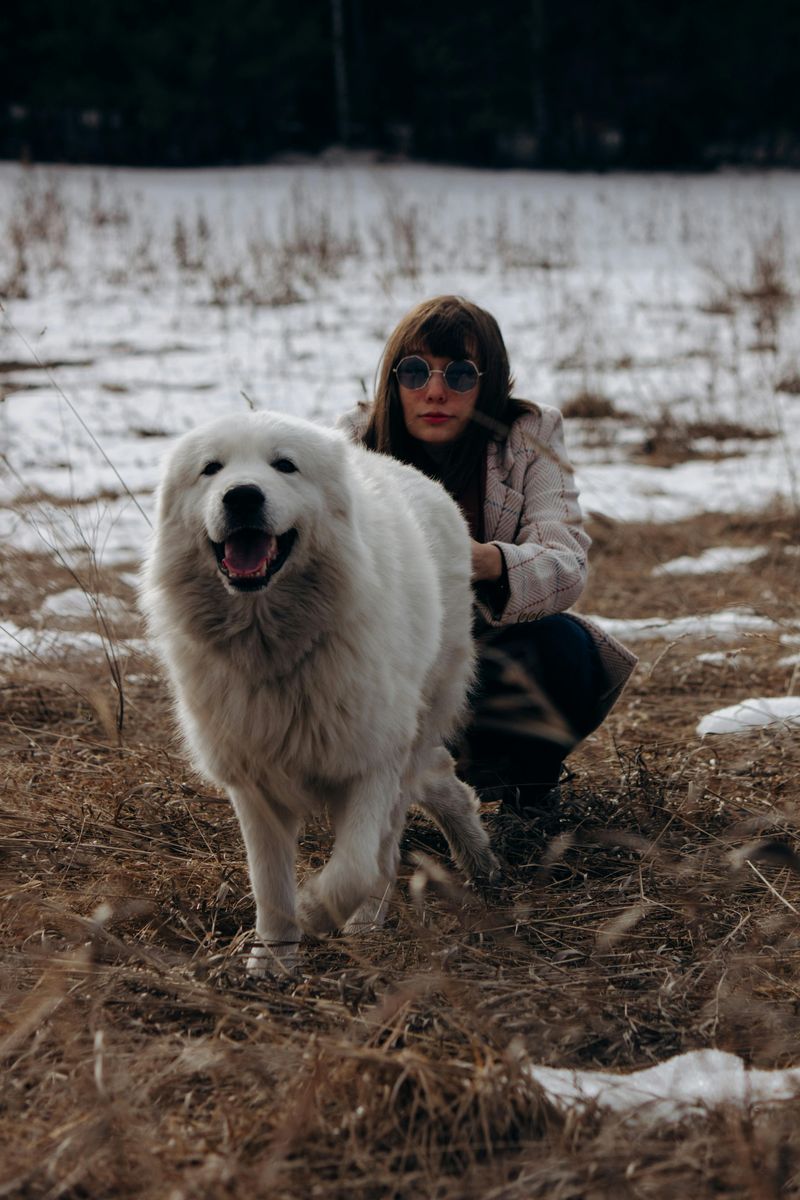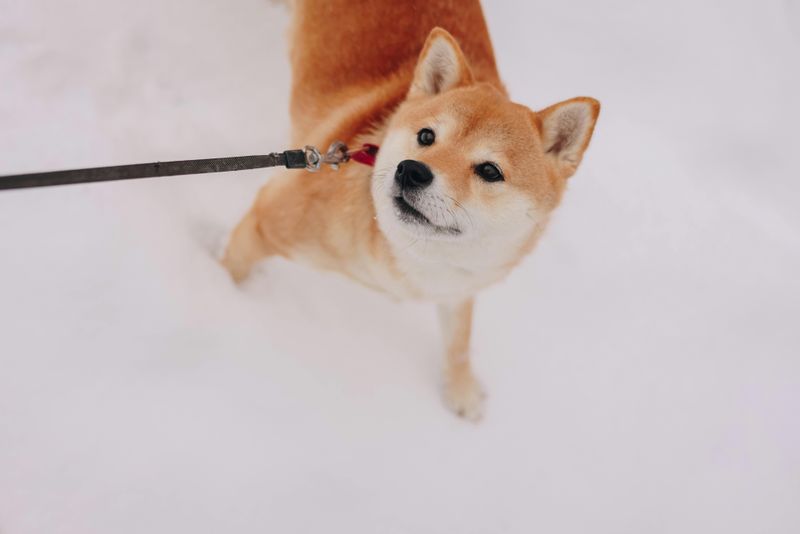Explore these 14 northern breeds that thrive in cold climates but face challenges in hot cities. From their history to unique traits, discover how these snow-loving companions stay true to their frosty roots.
Siberian Husky
Renowned for their striking blue eyes and energetic spirit, Siberian Huskies are natural adventurers. Originally bred by the Chukchi people for sled pulling, these dogs are built for endurance.
Their thick double coats protect them from severe cold, making them perfect for icy environments. However, in hot cities, they need careful supervision to prevent overheating.
With their playful demeanor, Huskies enjoy long runs and outdoor activities. They possess a strong pack mentality, thriving in environments that mimic their historical roots.
Alaskan Malamute
With a history as old as time, Alaskan Malamutes are revered for their strength and loyalty. Used historically for hauling heavy freight, they possess incredible stamina.
Their dense fur not only insulates against harsh winters but also highlights their majestic beauty. In warmer climates, care must be taken to keep them cool.
Known for their affectionate nature, Malamutes form deep bonds with their families. These gentle giants are happiest in snowy terrains where they can roam freely.
Bernese Mountain Dog
The Bernese Mountain Dog, with its tri-colored coat, is a beloved family companion. Originating from the Swiss Alps, they were used as draft dogs.
Their thick, silky fur is ideal for cold climates but can be a challenge in heat. Known for their gentle disposition, they are great with children.
These dogs enjoy outdoor adventures and need plenty of exercise. Their loyalty and calm demeanor make them wonderful additions to any cold-climate home.
Samoyed
Samoyeds, affectionately known as “Sammies,” are famous for their perpetual smiles. Bred by the nomadic Samoyedic people, they are accustomed to arctic conditions.
Their dense, white fur is both beautiful and functional, providing warmth in freezing temperatures. In hot climates, they need extra care to stay comfortable.
With a friendly and social personality, they are wonderful companions. Samoyeds thrive in family settings and love outdoor activities, especially in the snow.
Newfoundland
With a heart as big as its paws, the Newfoundland is every child’s gentle guardian. These dogs are known for their swimming prowess and were originally bred to aid fishermen.
Their waterproof coats shield them from cold northern waters, making them excellent companions for winter adventures. However, their thick fur can be a burden in warmer climates.
Newfoundlands are loving and protective, thriving in environments where they can watch over their human families.
Norwegian Elkhound
Norwegian Elkhounds, with their wolf-like appearance, are energetic hunters. Traditionally used in Norway for hunting elk, they are agile and strong.
Their thick, silver-grey coat is adapted for cold climates, offering protection from harsh weather. In warmer areas, they require proper cooling.
Elkhounds are loyal and lively, enjoying the thrill of the chase and outdoor exploration. They bond closely with their families and thrive in active environments.
Akita
The Akita, with its dignified demeanor, hails from Japan and is a symbol of loyalty. Known for their courage, they were originally bred for hunting large game.
Their dense double coat is perfect for cold climates but requires care in heat. Akitas are protective and can be reserved with strangers, yet loyal to their families.
These majestic dogs enjoy companionship and are happiest when they’re included in family activities. Their calm nature and strength make them distinctive.
Tibetan Mastiff
With a history steeped in mystique, the Tibetan Mastiff is both guardian and giant. Used traditionally to protect livestock, they are known for their formidable presence.
Their thick, woolly coats are ideal for cold, mountainous regions, providing warmth against the elements. In hotter areas, they need careful temperature management.
Independent and watchful, Tibetan Mastiffs are loyal to their families but may be aloof with strangers. They thrive in environments that offer freedom and space.
Keeshond
Known for their expressive ‘spectacles’ around the eyes, Keeshonds are sociable and friendly. Once used as watchdogs on Dutch barges, they are alert and lively.
Their thick coats are suited for colder climates, providing warmth during winter frolics. In hot cities, they need proper cooling to stay comfortable.
These affectionate dogs are great family companions, enjoying playful interactions and plenty of attention. Their cheerful demeanor makes them endearing to all who meet them.
Chow Chow
With a distinctive lion-like appearance, the Chow Chow captivates with its aloof grace. Historically, these dogs were used as guardians and hunters in China.
Their thick, dense fur is perfect for cold climates, though it requires careful grooming. In warmer environments, they may struggle with the heat.
Chows are known for their independence and loyalty, often forming deep bonds with one person. They require respectful handling and thrive in serene settings.
St. Bernard
Immortalized as the alpine rescue dog, the St. Bernard is synonymous with bravery and strength. Originally used by monks to rescue travelers, they are gentle giants.
Their thick coats protect them from the snowy Alps but require management in hot climates. Known for their kind nature, they are excellent companions for families.
St. Bernards enjoy outdoor adventures and are happiest when given plenty of space to roam. Their iconic history adds to their charm and appeal.
Finnish Lapphund
With roots in the Arctic Circle, Finnish Lapphunds are skilled herders. Traditionally used by the Sámi people for reindeer herding, they are agile and intelligent.
Their thick, weather-resistant coats make them well-suited for cold climates. In warmer areas, they need care to avoid overheating.
Known for their friendly and alert nature, Lapphunds thrive in active households. They enjoy mental stimulation and outdoor activities, making them engaging companions.
Great Pyrenees
The Great Pyrenees, with its majestic presence, was historically used to guard livestock in the Pyrenees Mountains. These dogs are known for their calm and patient demeanor.
Their thick, weatherproof coats provide protection against harsh winters but require attention in hot climates. They are gentle with family and have a strong protective instinct.
Great Pyrenees enjoy serene environments and are devoted to their human companions. Their noble history and gentle nature make them unique.
Shiba Inu
With a spirited personality and cat-like agility, the Shiba Inu is Japan’s beloved small companion. Originally bred for hunting, they possess a keen sense of adventure.
Their thick double coat is well-suited for cold climates, offering insulation. In hot cities, they need careful attention to stay comfortable.
Shibas are known for their independence and lively demeanor. They thrive in environments that allow them to explore and express their curious nature.

